OVER the past two weeks much of the rainfall activity recorded nationally has been recorded in northern and central Australia.
Much of this rainfall is associated with severe tropical Cyclone Megan and resulted in widespread thunderstorms and rainfall in the Northern Territory, north-west Queensland and in parts of the Kimberley region.
The result of this rainfall is yet to be seen in changes to biomass and fractional cover, while parts of the north remain obscured by cloud which limits satellite observations.
However, on a national basis, there has been a largely positive trend to biomass accumulation and growth.
It is worth noting this improvement still remains largely in the eastern states with large areas of central and Western Australia still to record a significant lift in total standing dry matter amounts.

Imagery and analysis provided by CiboLabs
Total standing dry matter
The total standing dry matter (TSDM) amounts recorded in the latest updates show a slight increase in levels of biomass in central west New South Wales, central Tasmania and a slightly improving trend in areas of central Western Australia.
The clod associated with the wet season and cyclones in northern Australia has prevented clear images, however the trend of growth in these areas remains very positive with levels increased or unchanged in the last two weeks.
Seasonal comparison total standing dry matter
In comparison to the eight-year average (Figure 2) show continued, albeit slight, improvements in the seasonal conditions for NSW and Tasmania.
Areas noted as being below the eight-year average have lifted only slightly, with much of Victoria and south-east South Australia still below the eight-year average.
Fractional cover (growth)
Fractional cover (Image 3) remains very similar with areas noted as experiencing growth at the commencement of March still seeing high levels of growth.
Much of the area noted in the seasonal comparison layer – such as south-east South Australia and western Victoria — have yet to see significant growth occur.
Green total standing dry matter
Green standing dry matter remains reasonably stable with the early March observations.
There has been slight increases along major river systems, reflecting run off events, and much of the high to extreme amounts of green standing dry matter are concentrated in northern Australia. (Image 4).
Dead standing dry matter
Dead standing dry matter amounts (Image 5) continue to remain largely unchanged.
Much of the inland grazing areas of eastern Australia and southwest Western Australia have amounts of dead standing dry matter in the range of 750 – 1000kg DM/Ha.
Areas along the eastern seaboard have lower levels of dead material, reflecting the growth and amount of green material contributing to available feed supplies.
Monthly ground cover levels
Ground cover levels remain largely similar to previous observations with no significant alternations noted. (Image 6)
For more localised information including regional level overviews, users are encouraged to explore the Cibo Labs Regional Comparison. This tool provides regional data that may show the impact of localised weather or fire events. A further level of detail for individual properties is available for users who have created an Australian Feedbase Monitor account, which can be accessed both through the MyMLA portal or through the Cibo Labs website.
The Cibo Labs National Comparison can be used to freely access these layers (https://www.cibolabs.com.au/products/national-comparsion/) to view the most recent images from a national, state or catchment level.
This tool can complement the Australian Feedbase Monitor which can also be created within the Cibo Labs Web Site www.cibolabs.com.au

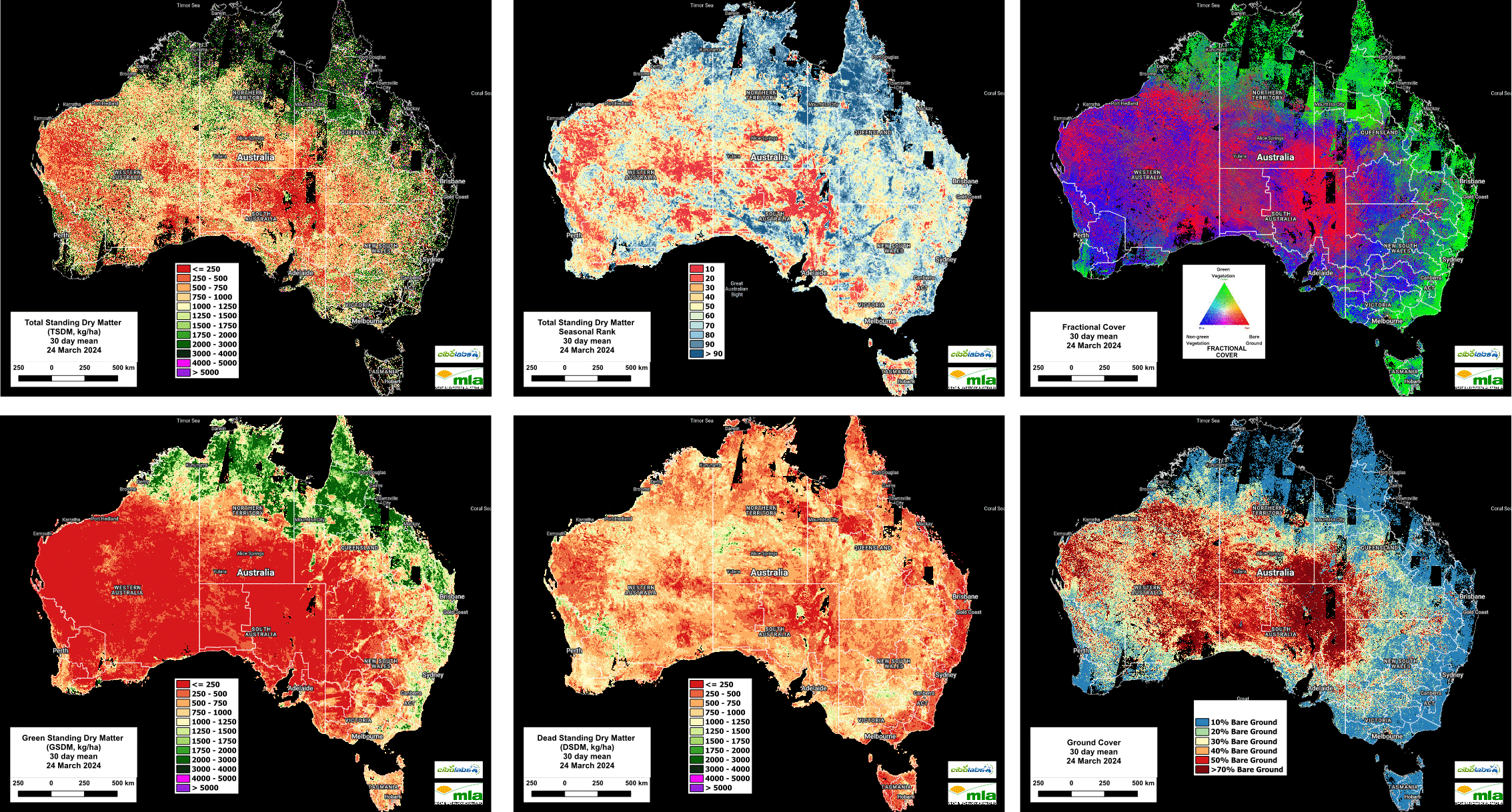
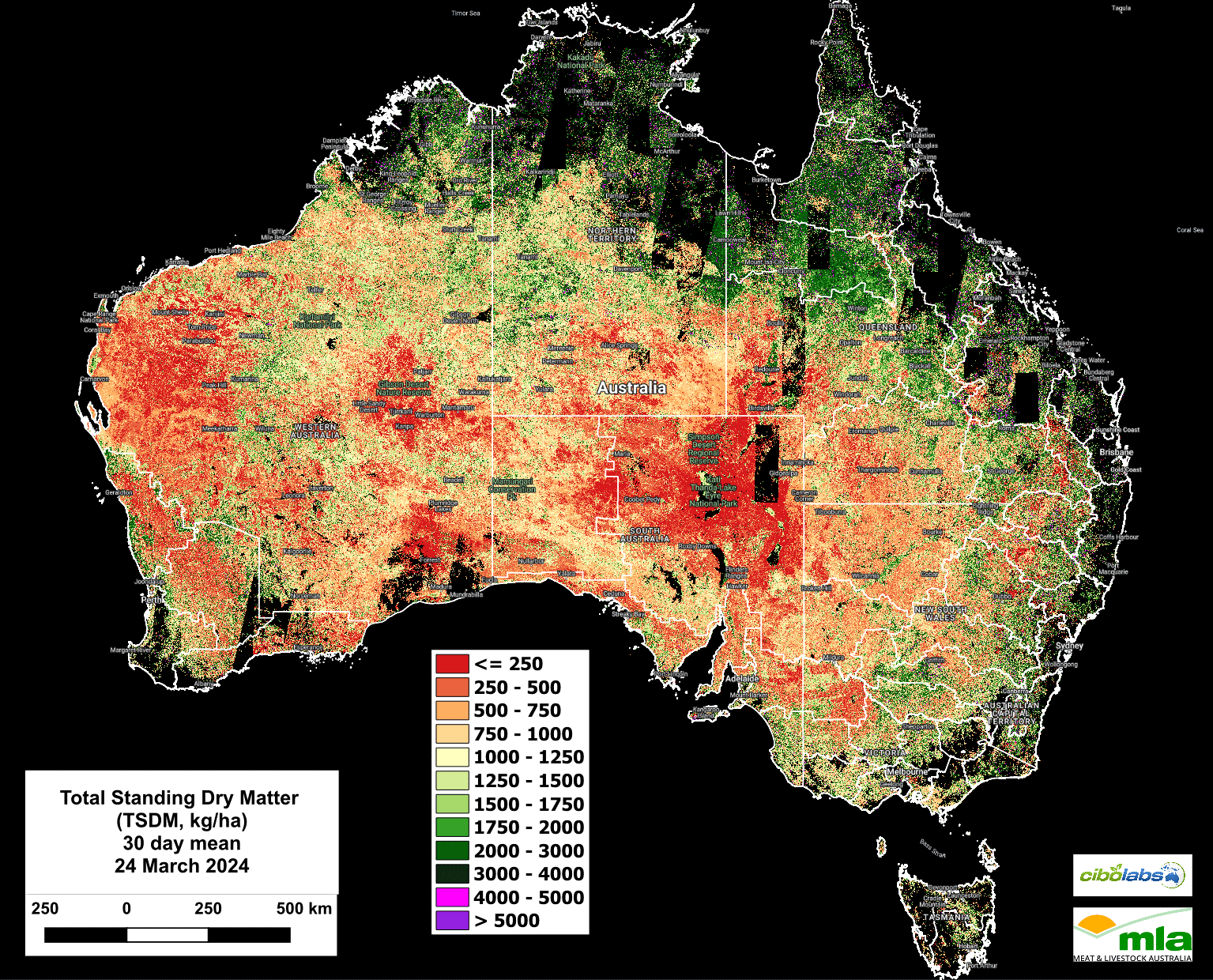
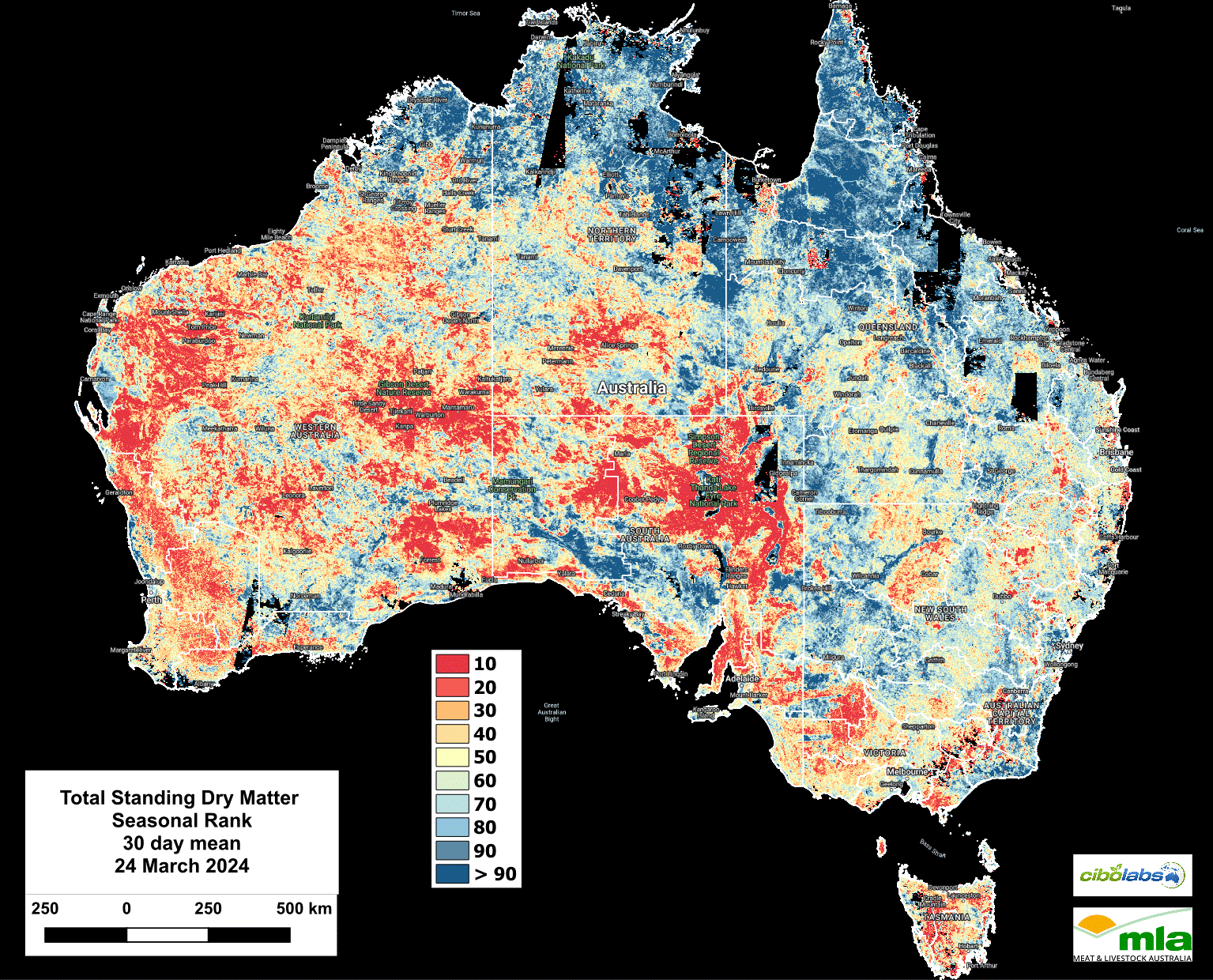
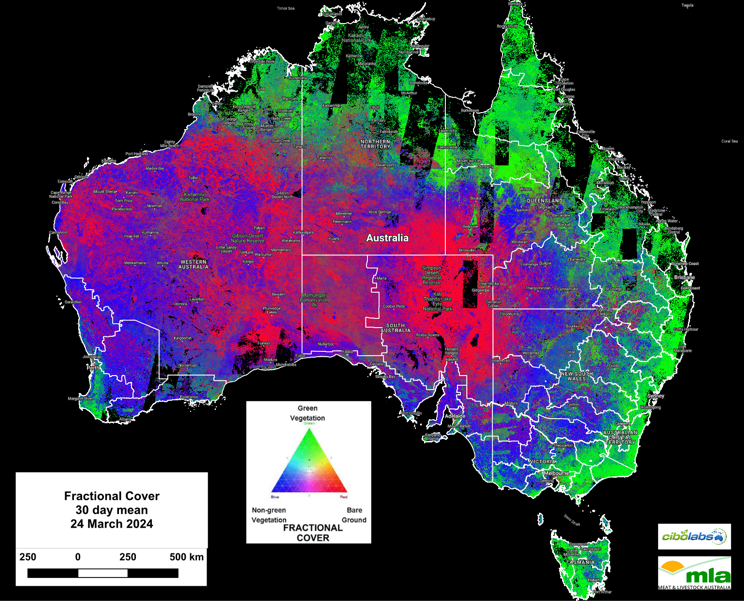
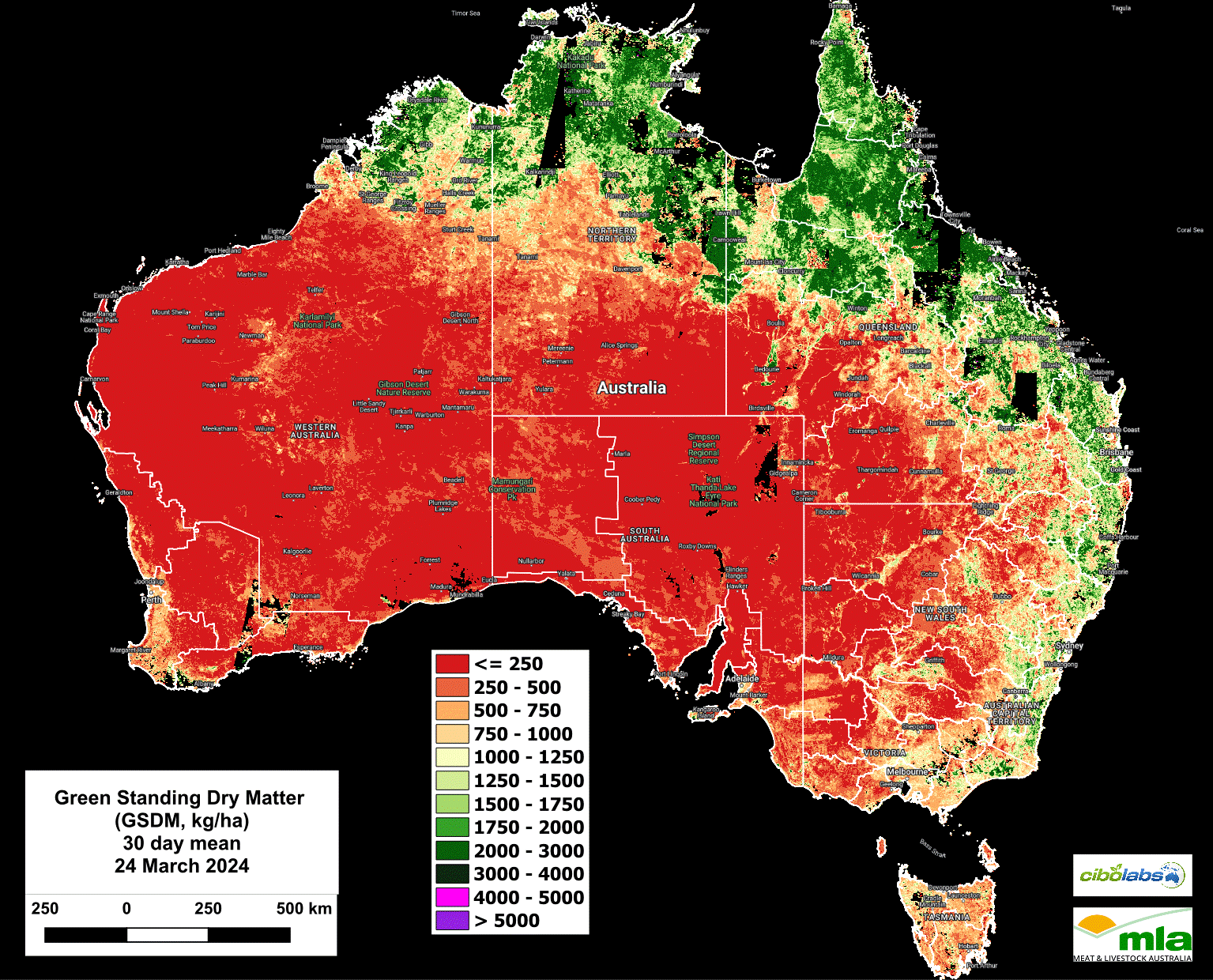
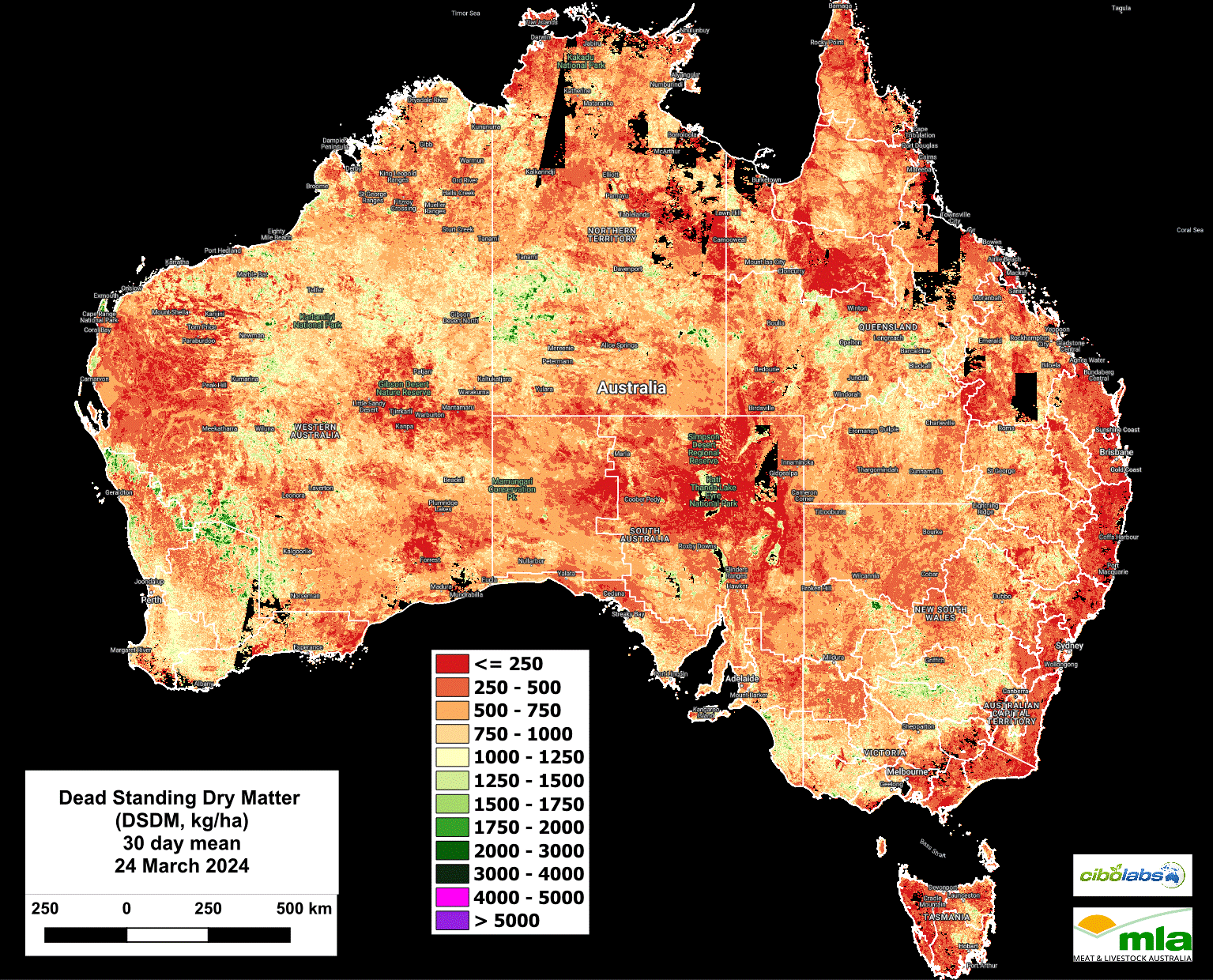
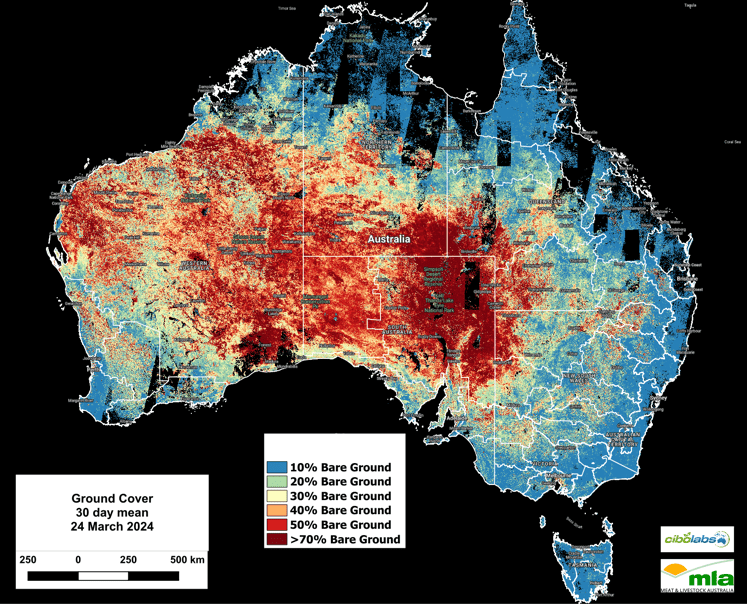


HAVE YOUR SAY